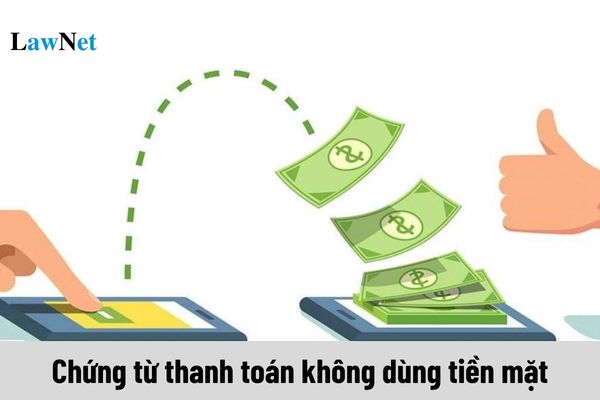What are receipts for non-cash payments in Vietnam? By 2025, shall a receipt for non-cash payments be required to deduct input VAT in Vietnam?
What are receipts for non-cash payments in Vietnam?
Based on the provisions in Clauses 3 and 4, Article 15 of Circular 219/2013/TT-BTC, amended by Clause 10, Article 1 of Circular 26/2015/TT-BTC, point c, Clause 6, Article 3 of Circular 119/2014/TT-BTC, and Article 1 of Circular 173/2016/TT-BTC,
receipts for non-cash payments include bank payment vouchers and other receipts for non-cash payments.
Bank payment vouchers are understood as having documents proving the transfer of money from the buyer's account to the seller's account opened at payment service providers according to the following payment forms:
- Check
- Payment orders or instructions, collection orders, collection on behalf,
- Bank card, credit card,
- Phone sim (e-wallet)
- Other payment forms as prescribed (including the case where the buyer makes payment from the buyer's account to the seller's account named after the private business owner, or the buyer pays from the buyer's account in the name of the private business owner to the seller's account)
Additionally, other non-cash payment cases for input VAT deduction include:
- In the case of goods or services purchased through the offsetting method between the value of goods or services purchased with the value of goods or services sold, loaned, borrowed goods where this payment method is specifically regulated in the contract, there must be a reconciliation record and confirmation between the two parties on offsetting payment between goods, services purchased with goods, services sold, loaned items. In the case of debt offset via a third party, there must be a three-party (3) debt offset record as a basis for tax deduction.
- In the case of goods or services purchased under the method of debt offset such as borrowing, lending money; debt clearance through a third party where this payment method is specifically regulated in the contract, there must be a loan contract in the form of a written document prepared beforehand and a money transfer document from the lender's account to the borrower's account for the loan in cash, including the case of offsetting between the value of goods, services purchased with the amount the seller supports the buyer, or the buyer is asked to pay on behalf.
- In the case of goods or services purchased paid through a third-party authorization via a bank (including the case where the seller requests the buyer to pay the money via a bank for a third party designated by the seller), that payment through authorization or payment to the third party as designated by the seller must be specifically regulated in the contract in the form of a document and the third party is a legal entity or individual operating under the law.
In the case of making a payment in the forms mentioned above, if the remaining value is paid in cash worth 20 million VND or more, tax can only be deducted if there is a bank payment voucher.

What are receipts for non-cash payments in Vietnam? By 2025, shall a receipt for non-cash payments be required to deduct input VAT in Vietnam? (Image from the Internet)
By 2025, shall a receipt for non-cash payments be required to deduct input VAT in Vietnam?
Currently, under Clause 2, Article 12 of the Value Added Tax Law 2008:
Deduction of Input Value Added Tax
...
2. Conditions for deduction of input value-added tax are regulated as follows:
...
b) There is a receipt for non-cash payments for goods and services purchased, except for goods and services purchased each time with a value of less than twenty million VND;
...
According to point b, Clause 2, Article 14 of the Value Added Tax Law 2024, all goods and services purchased must have a receipt for non-cash payments, except for certain specified cases by the Government of Vietnam.
However, the Value Added Tax Law 2024 comes into effect from July 1, 2025, except for the regulations on revenue levels of households, individuals engaged in production or business that are not subject to tax stipulated in Clause 25, Article 5 of the Value Added Tax Law 2024 and Article 17 of the Value Added Tax Law 2024 which take effect from January 1, 2026.
This also means that in 2025, it is not mandatory to have a receipt for non-cash payments for all cases of goods and services purchased, and will be implemented as follows:
- From January 1, 2025, to June 30, 2025: The provision of the Value Added Tax Law 2008 still applies, so invoices for goods and services below 20 million VND do not require a receipt for non-cash payments.
- From July 1, 2025, onwards: Apply the new regulations in the Value Added Tax Law 2024; therefore, all invoices for goods and services purchased must have a receipt for non-cash payments without a minimum amount stipulated.
What is the time for determining VAT in Vietnam from July 1, 2025?
Based on Article 8 of the Value Added Tax Law 2024, the time for determining value-added tax is regulated as follows:
- The time for determining value-added tax is regulated as follows:
+ For goods, it is the time of transfer of ownership or the right to use the goods to the buyer or the time of issuing the invoice, regardless of whether the money has been collected or not;
+ For services, it is the time of completing the provision of services or the time of issuing the service provision invoice, regardless of whether the money has been collected or not.
- The time for determining value-added tax for the following goods and services is regulated by the Government of Vietnam:
+ Exported goods, imported goods;
+ Telecommunication services;
+ Insurance business services;
+ Electricity supply, electricity production, clean water;
+ Real estate business activities;
+ Construction, installation, and oil and gas activities.

